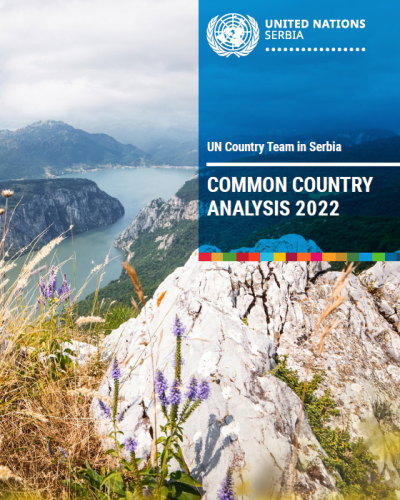UN Serbia Common Country Analysis 2022

The Common Country Analysis (CCA) responds to the urgency of the 2030 Agenda by delivering an evidence-based analysis of the context for sustainable development in Serbia. The analysis integrates the overall commitment of the United Nations (UN) to UN Charter values, the Leave No One Behind (LNOB) principle, and international norms and standards. It rests on traditional and non-traditional quantitative and qualitative data and sources, including a broad, regular consultation process, described further in the methodology section.
This CCA is updated annually and examines the current situation in Serbia with respect to the Sustainable Development Goals (SDGs). It highlights progress made towards nationalisation and achievement of the SDGs within the context of the process of accession to the European Union (EU). It identifies challenges, including: structural weaknesses; entrenched inequalities; and incomplete strategic, legislative and policy frameworks, as well as shortcomings in performance and effectiveness and gaps in implementation.
The current version of the Common Country Analysis (CCA) is a light update of the 2021 edition. It is fully gender mainstreamed, as a result of the comprehensive reviewconducted by the Gender Thematic Group and UN Women. Like the original report, this update benefitted from consultations held throughout the UN Sustainable Development Coordination
Framework (UNSDCF) cycle by the UN Country Team (UNCT) and the Resident Coordinator’s Office (RCO), under the leadership of the Resident Coordinator and Results Group Chairs. These included the institutions and partners of the Government of the Republic of Serbia (GoS), in both bilateral and group settings;civil society organisations (CSOs); international financial institutions (IFIs); the EU; and international development partners.
The main sources used in the CCA update are the rich analytical work carried out by the UNCT during the year to date, in cooperation with the Government of the Republic of Serbia and other partners, along with national and international reports, including by IFIs, official national statistics and non-traditional data sources. In view of the centrality of the process of the accession of Serbia to the EU to the country’s national development priorities, the EU Serbia 2022 Report was also a key reference.

















